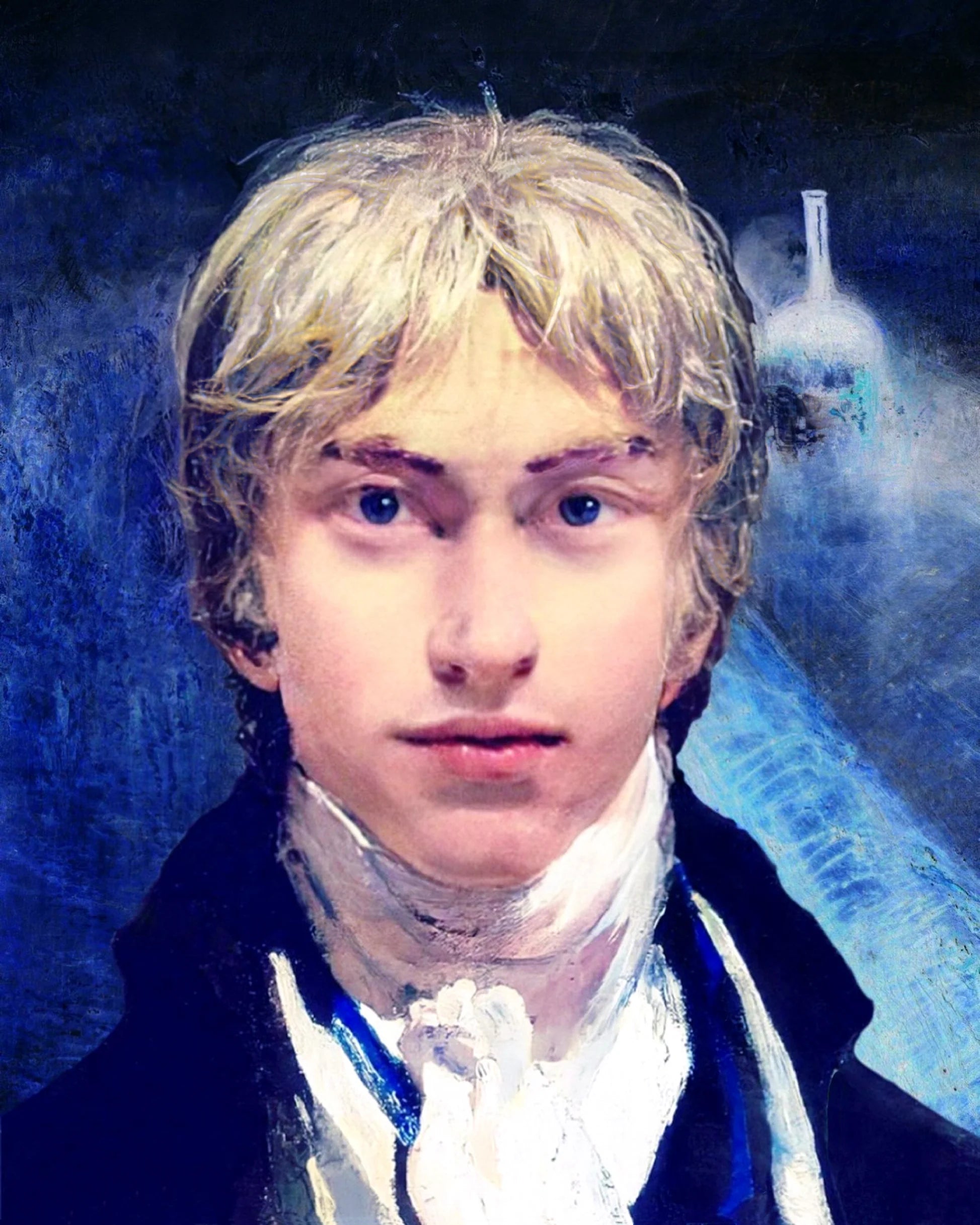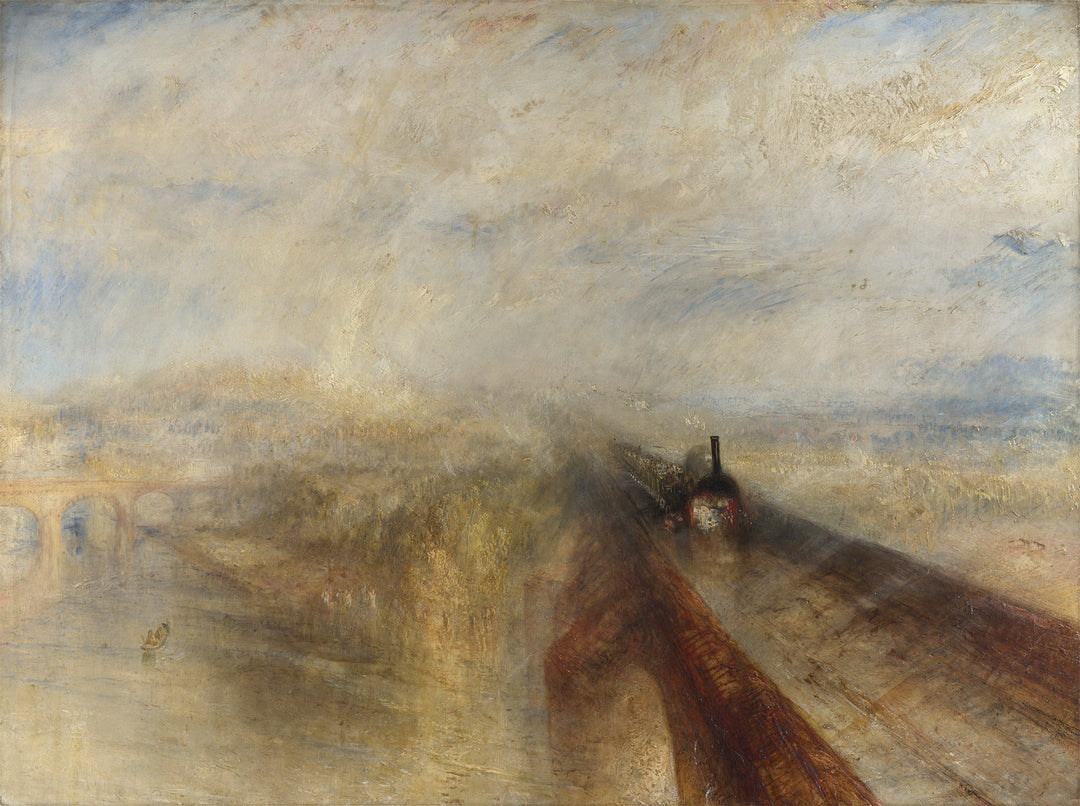
J. M. W. Turner

Joseph Mallord William Turner, a master of British romanticism, intensely explored the interaction between light and the natural environment, vividly reflected in his work "Rain, Steam, and Speed – The Great Western Railway". Painted in 1844, this painting captures the essence of industrial progress with a dynamic image of a steam train crossing the Maidenhead railway bridge over the River Thames. The work is notable for its dramatic representation of speed and movement, where Turner uses smudges and strokes of color to create the impression of rain and steam in the environment.
Turner's ability to capture light and weather in his paintings establishes a dialogue, a bridge, between the new era and the natural landscape of romanticism, reflecting what was being lost with the advance of industrialization. The English painter's interest in capturing transient moments would later resonate in impressionism, especially in the works of Claude Monet, who admired how Turner approached light in his paintings.
Monet and other Impressionists would be inspired by Turner's ability to capture an ephemeral atmosphere, an element that would become one of the pillars of Impressionism. Additionally, Turner's technique of depicting speed and movement anticipated some aspects of Futurism, especially in the way of combining movement and technological progress in artistic expression. Painters like Umberto Boccioni and Giacomo Balla explored themes of speed and technology that resonated with Turner's early representations of the Industrial Revolution.

